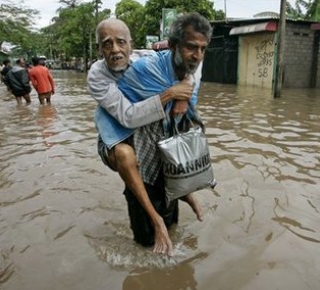Floods

The principal reason for floods in the country lies in the very nature of her natural ecological systems- the monsoon. Sedimentation of river beds is not considered a major factor contributing t o flooding in Sri Lanka . However, due to land use changes in the watersheds, sediment loads could increase in the future.
In Sri Lanka, floods are mainly influenced by continuous and excessive rainfall during the monsoon and depression periods. Rainfall of 125m m per day have been recorded at several stations in the Dry zone. The highest so far recorded for a 24-hour period is 805 mm on December1 5, 1887, at Nedunkerni, 4Okm southwest of Mullaitiw.
Rivers in the southwestern quadrant of Sri Lanka, which are in the wet zone, are more wlnerable to floods due to heavy and prolonged rainfall, whilst those in the dry zone become flood affected during depressions of the northeast monsoon . Floods sometimes also occur during the inter-monsoonal periods.
In 1994, torrential rains and consequent floods in Sri Lanka have rendered 375,000 people homeless and devastated large tracts of paddy. In June 2008, flash floods and landslides triggered by heavy monsoon rains have killed over 20 people and forced about 300,000 from their homes.In May 2010, floods caused by heavy rain in several areas of Sri Lanka have affected more than half a million people, and taken at least 20 lives. Torrential pre-monsoon rains were worsened by cyclone Laila, which formed in the Bay of Bengal.
Related Content
- State of the Climate in Asia 2024
- Order of the National Green Tribunal regarding waste disposal in Ghazipur drain, Delhi, 28/05/2025
- Global Assessment Report on Disaster Risk Reduction 2025
- Affidavit filed by the Chief Wildlife Warden, Assam on feral horses in Dibru-Saikhowa National Park (DSNP), 08/05/2025
- Affidavit filed by the MoEF&CC related to reduction of glacier sizes leading to an increase in moraine-dammed lakes in Himachal Pradesh and Tibet, 22/04/2025
- Order of the National Green Tribunal regarding township construction on the Yamuna river bed, Noida, Gautam Buddh Nagar, Uttar Pradesh, 21/04/2025
